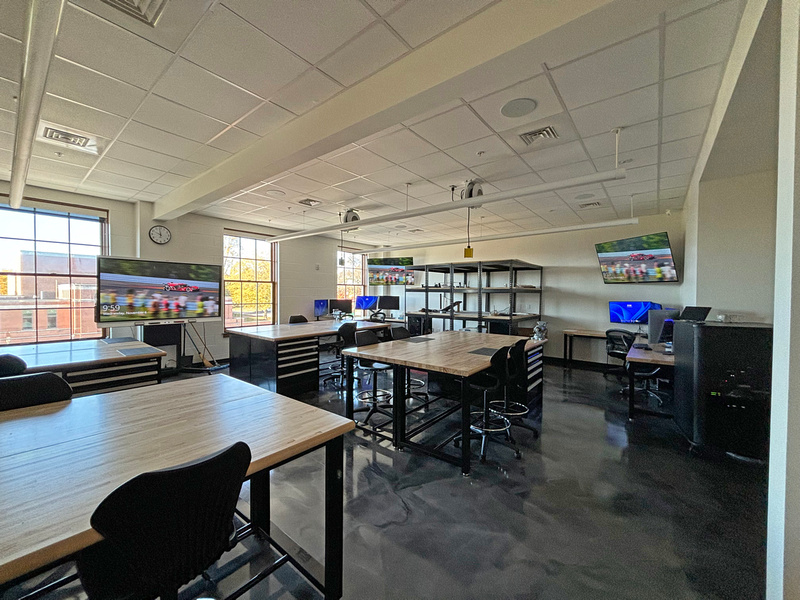About
School News
Makerspace Enhances Engineering Classes
There is a new classroom on campus designed specifically for engineering. Over the summer, the new room was constructed in Kenan Hall to make up for a lack of space for students to effectively practice modern computational engineering designs with physical prototyping.
This new makerspace offers “a level of local computing power far beyond what the school has had before,” said Dr. Michaels, Woodberry’s engineering teacher. “It also provides massively expanded and more usable additive (3D printing) and subtractive (CNC machining) manufacturing capabilities.”
In addition to teaching computational design, prototyping, subtractive and additive manufacturing, engineering simulations, and optimization, Dr. Michaels runs the day-to-day operations of the makerspace.
Thus far, Introduction to Engineering classes have been able to use the new computers to simulate and optimize performance of bridges and aircraft wings. In Eclipse classes, which focus on problem solving, students designed race cars that were subsequently 3d printed by the engineering classes. Individual students have used 3d printers for classes like Honors Science Thesis Seminar, an advanced physics course. These technologies, as well as the CNC machines, will also be used in Aerospace Engineering: Development of a Miniature Race Car, where students design and develop a high performance miniature air-powered race car for the officially sanctioned “F1 in Schools” competition.

“This room offers the ability to practice the workflow of a design engineer,” said Dr. Michaels. “These opportunities allow students to work on large group projects over many weeks rather than a simple two-three project. They have time and space to take risks, try various approaches, make mistakes and learn from them.”
Dr. Michaels hopes the makerspace becomes a place where students come for classes and teach themselves through group projects, using knowledge they learned collectively.
“We haven’t really gotten our hands dirty yet, but we are just setting the base to the real learning opportunity,” said Dominick Wijayn Munoz ’26, who is in the engineering class.
Cody Coleman ’26 is in the honors course for engineering and has already worked on two projects using the new materials to design and lay out their work. One of their projects consisted of getting a golf ball to go through a track they designed and created. Adding to the challenge, the golf ball had to travel through the course in less than 15 seconds.
“It took us a while and was hard, but with the new tools it made the project fun,” he said.
>> Reporting by Angel Mateo-Aguilar ’26
Woodberry Forest School is an exceptional private school community for high school boys in grades nine through twelve. It is one of the top boarding schools in the United States and one of the only all-boys, all-boarding schools in the country.
Explore & Resources
Woodberry Forest admits students of any race, color, sexual orientation, disability, religious belief, and national or ethnic origin to all of the rights, privileges, programs, and activities generally accorded or made available to students at the school. It does not discriminate on the basis of race, color, sexual orientation, disability, religious belief, or national or ethnic origin in the administration of its educational policies, admissions policies, scholarship and loan programs, and athletic or other school-administered programs. The school is authorized under federal law to enroll nonimmigrant students.





